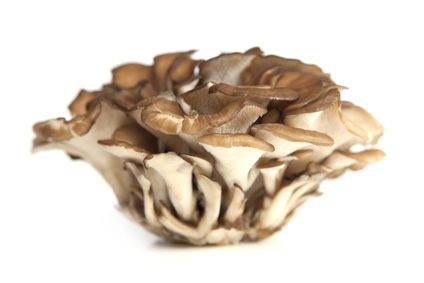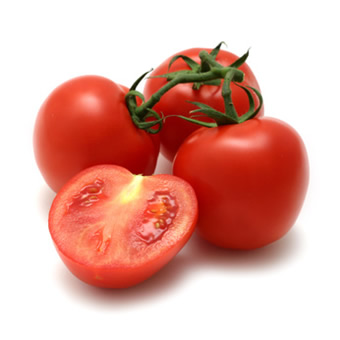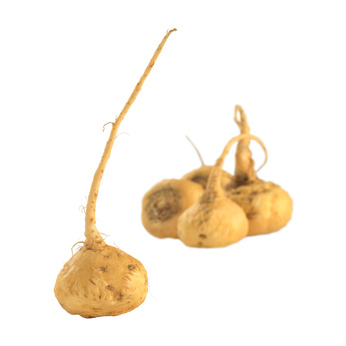Bromelain is an enzyme found in pineapple juice and in the pineapple stem. Bromelain is naturally found in both the juice and stems of the pineapple plant, but the stem contains more bromelain than the pineapple does. The first isolation of bromelain was recorded by the Venezuelan chemist Vicente Marcano in 1891 from the fruit of pineapple. Bromelain is most often used to help digestion and help reduce inflammation.
Bromelain Benefits
Bromelain enzyme is strongly anti-inflammatory substance, it decreases pain and edemas.also reduces the redness, tenderness and swelling as a result of tissue injuries and muscle pains. Bromelain has shown good results in treating inflammation after the surgery and injury. When used in combination with other digestive enzymes, bromelain relieves an upset stomach or heartburn. In Europe, a patented tape has been developed containing bromelain that is used clinically for debriding wound eschar. Thanks to its anti-inflammatory effects is helpful in decreasing pain and burns.
Digestion
Bromelain is a protein-digesting enzyme that is active at a broad range of pHs, and thus can promote digestion of protein in both the stomach and small intestine. As a proteolytic enzyme it assists the body’s own digestive mechanisms in reducing very large, complex protein molecules into smaller peptide units or individual amino acids. Bromelain can digest proteins and may help relieve stomach upset or heartburn, particularly when used in conjunction with other enzymes such as amylase and lipase. A study in 2008 issue of “Clinical Immunology” found bromelain enzyme decreases inflammation in ulcerative colitis and reduces the secretion of cytokines in IBS.
Anti-Inflammatory
Bromelain enzyme inhibits formation of prostaglandin E-2, a chemical that causes inflammation, and it also helps to stimulate the production of prostaglandin E-1, an anti-inflammatory chemical. In a clinical study of adults who experienced mild acute knee pain for three months or less, bromelain enzyme demonstrated anti-inflammatory and analgesic effect, reducing the symptoms of osteoarthritis and rheumatoid arthritis. Administration of bromelain presurgically can reduce the average number of days for complete disappearance of pain and inflammation. A study conducted by an orthopedic surgeon showed that giving bromelain to 59 of his patients resulted in a clear reduction in both swelling and discomfort. A study published in 2002 issue of Phytomedicine also show that bromelain enzyme reduces knee joint pain in a dose dependent manner. Bromelain enzyme works by blocking selected proinflammatory metabolites that accelerate the inflammatory process. In animal studies, bromelain was the most powerful of nine substances examined, on a par with the drug prednisone.
Sinusitus
Some studies suggest that it may help reduce congestion, improve breathing and suppress coughing. In a double blind study comparing the use of bromelain with placebo, 87 % of those patients who took bromelain reported good to excellent results compared with 68% of the placebo group. A study 2006 issue of Alternative Medicine Review, bromelain enzyme in doses of 500 mg to 1,000 mg per day is effective in sinusitis as an anti-inflammatory and mucolytic. Commission E approved bromelain to treat swelling and inflammation after surgery, particularly sinus surgery.
Immune System
Some scientific evidence from test tubes and animals suggests that bromelain can fight against infectious agents such as viruses and bacteria. A 2005 study done in Germany showed that bromelain activated immune cells that fight infection. Other studies suggest that it may also boost the amount of certain immune system hormones, called cytokines. Bromelain has also been shown to remove T-cell CD44 molecules from lymphocytes and to affect T-cell activation.
Antibiotics and Bromelain
Some studies have shown it to be as effective as antibiotics for treatment of , bronchitis, sinusitis, pneumonia and dental and kidney infection. In a double-blind study, 100 % of people who received bromelain enzyme/trypsin in combination with antibiotics had a resolution of their infection, compared to only 46 % of those who received antibiotics alone. Combined bromelain and antibiotic therapy has been shown to be more effective than antibiotics alone in a variety of conditions including pneumonia, bronchitis, pyelonephritis and sinusitis.
Cardiovascular
The protease enzyme is beneficial in reducing the clumping of platelets, the formation of plaques in the arteries and the formation of blood clots. Clumping or aggregation may contribute to arterial blockage, heart attack or stroke. Studies have shown that bromelain can also be useful in the reduction of platelet clumping and blood clots in the bloodstream, especially in the arteries. A drastic reduction in the incidence of coronary infarct after administration of potassium and magnesium orotate along with 120-400 mg bromelain enzyme per day has been reported.
Burn
When applied to the burned skin it can be rather effective in case of very severe burns. One study using a debridement agent that is derived from bromelain to treat people with second- and third degree burns showed a benefit. When applied to the skin, bromelain removes dead cells in a process known as debridement.
Bromelain Dosage
Bromelain is available in tablets or capsules and as a topical to treat burns. Dosages for bromelain vary, depending on the reason that you’re taking it. The German Commission E recommends 80-320 mg two to three times per day. As digestive aid, the recommended dosage is generally 500 mg three times per day. Studies on heart patients indicates that increasing the dosage of bromelain to 400 mg – 1,000 mg per day may reduce the symptoms of angina pectoris. Inflammation; 500-mg to 2,000-mg per day. For best results, the total daily dosage should be divided into 4 doses and taken an hour before or after food. Bromelain has to be enteric-coated so that it will not be used as a digestive enzyme if activated in the stomach. When taken on an empty stomach approximately 40 percent of the bromelain is absorbed into the bloodstream intact.
Bromelain Side Effects
Bromelain is generally safe and free of side effects when taken in moderate amounts. Occasionally individuals may develop an allergic rash from bromelain. If you are allergic to pineapple, do not take bromelain. Bromelain enzyme may increase bleeding risk when taken together with drugs that are known to increase bleeding. You should stop taking bromelain at least 2 weeks before surgery.
 In a clinical study published in 1996 Townsend Letter for Doctors and Patients, a maitake extract was found to be effective against leukemia and stomach and bone cancers. In China, sixty-three patients with lung, stomach, or liver cancers or leukemia who took four capsules of maitake extract three times daily before meals for one to three months showed an anticancer effect. A recent study at New York Medical College also showed that maitake D-fraction destroyed prostate cancer cells in the test-tube.
In a clinical study published in 1996 Townsend Letter for Doctors and Patients, a maitake extract was found to be effective against leukemia and stomach and bone cancers. In China, sixty-three patients with lung, stomach, or liver cancers or leukemia who took four capsules of maitake extract three times daily before meals for one to three months showed an anticancer effect. A recent study at New York Medical College also showed that maitake D-fraction destroyed prostate cancer cells in the test-tube. Free-radical damage can become apparent in the eyes through the development of cataracts or macular degeneration. Studies provide evidence that nutritional antioxidants slow down the progression of cataracts and age-related macular degeneration. Tomatoes may protect the eyes by deterring macular degeneration, a cause of vision loss in older people, suggests new University of Maryland research that found high levels of lycopene in eye tissue.
Free-radical damage can become apparent in the eyes through the development of cataracts or macular degeneration. Studies provide evidence that nutritional antioxidants slow down the progression of cataracts and age-related macular degeneration. Tomatoes may protect the eyes by deterring macular degeneration, a cause of vision loss in older people, suggests new University of Maryland research that found high levels of lycopene in eye tissue. Supportive evidence provided recently by scientists proves that mate tea has a positive effect on controlling weight and boosting weight loss. In Germany, it is a popular weight-loss aid and in France Yerba Mate is approved for the treatment of fatigue and as an aid in weight loss programs. A study done at The University of Lausanne found that people who use yerba mate actually burn more body fat as energy, therefore, significantly reducing their total weight. A study done in 1999 in Switzerland, found that yerba mate had a thermogenic effect, meaning that it seemed to increase the amount of body fat burned as energy.
Supportive evidence provided recently by scientists proves that mate tea has a positive effect on controlling weight and boosting weight loss. In Germany, it is a popular weight-loss aid and in France Yerba Mate is approved for the treatment of fatigue and as an aid in weight loss programs. A study done at The University of Lausanne found that people who use yerba mate actually burn more body fat as energy, therefore, significantly reducing their total weight. A study done in 1999 in Switzerland, found that yerba mate had a thermogenic effect, meaning that it seemed to increase the amount of body fat burned as energy. Maca root has been shown to increase male libido and sperm production in studies. Study data showed that maca increased sexual desire by 180 % and increased sperm count by 200%. Research has proven that it acts on certain areas of the body that produce hormones and energizing substances, which enhance libido and increase virility. The clinical study carried out by Gonzales from Universidad Peruana Cayetano Heredia demonstrates an 85% increase in the men’s total sperm count, as well as an increase in sperm motility and motile sperms quantity in men treated with maca. Research has demonstrated that maca root contains a chemical called p-methoxybenzyl isothiocyanate, which has reputed aphrodisiac properties. The hexanic extract of maca appears to be more effective at improving sexual performance in rats than methanolic and chloroformic extracts.
Maca root has been shown to increase male libido and sperm production in studies. Study data showed that maca increased sexual desire by 180 % and increased sperm count by 200%. Research has proven that it acts on certain areas of the body that produce hormones and energizing substances, which enhance libido and increase virility. The clinical study carried out by Gonzales from Universidad Peruana Cayetano Heredia demonstrates an 85% increase in the men’s total sperm count, as well as an increase in sperm motility and motile sperms quantity in men treated with maca. Research has demonstrated that maca root contains a chemical called p-methoxybenzyl isothiocyanate, which has reputed aphrodisiac properties. The hexanic extract of maca appears to be more effective at improving sexual performance in rats than methanolic and chloroformic extracts.